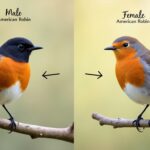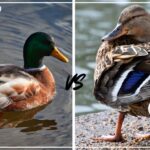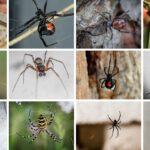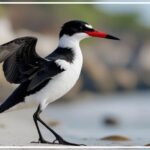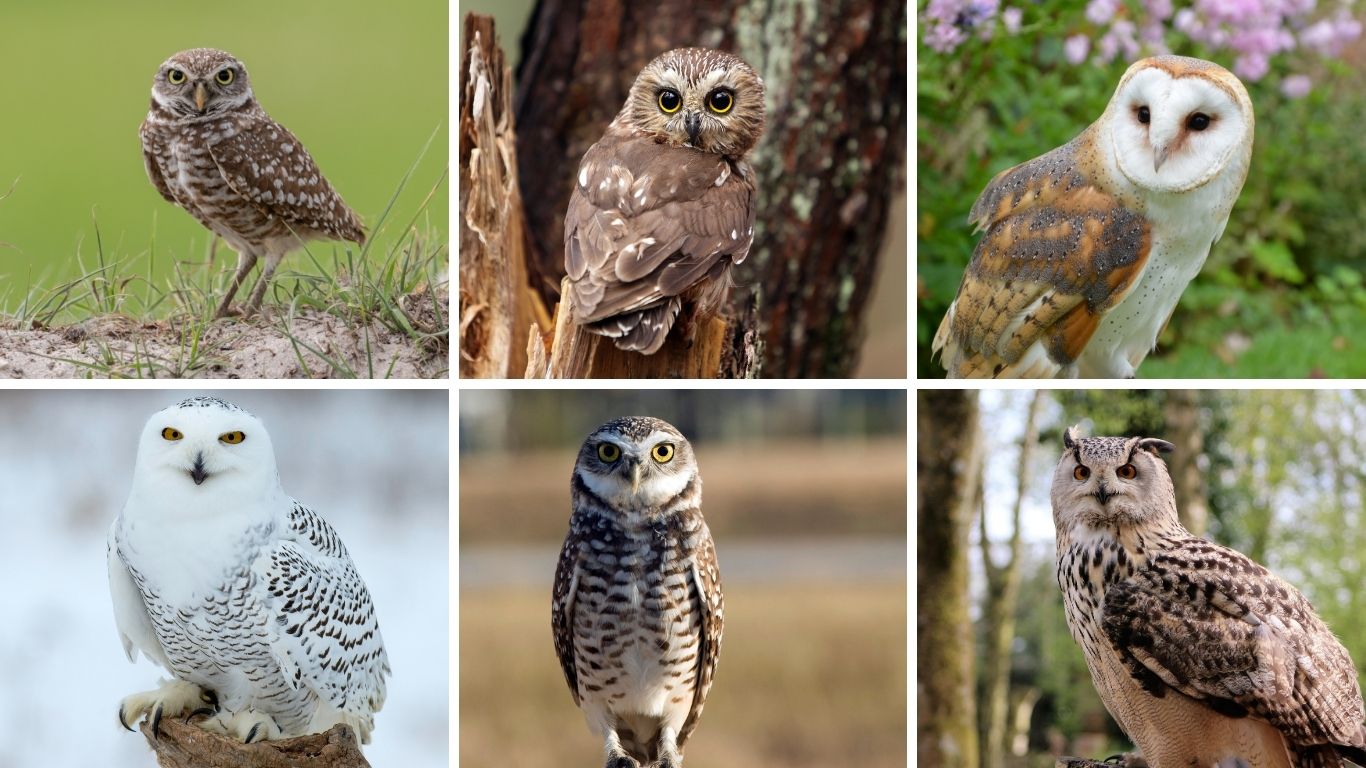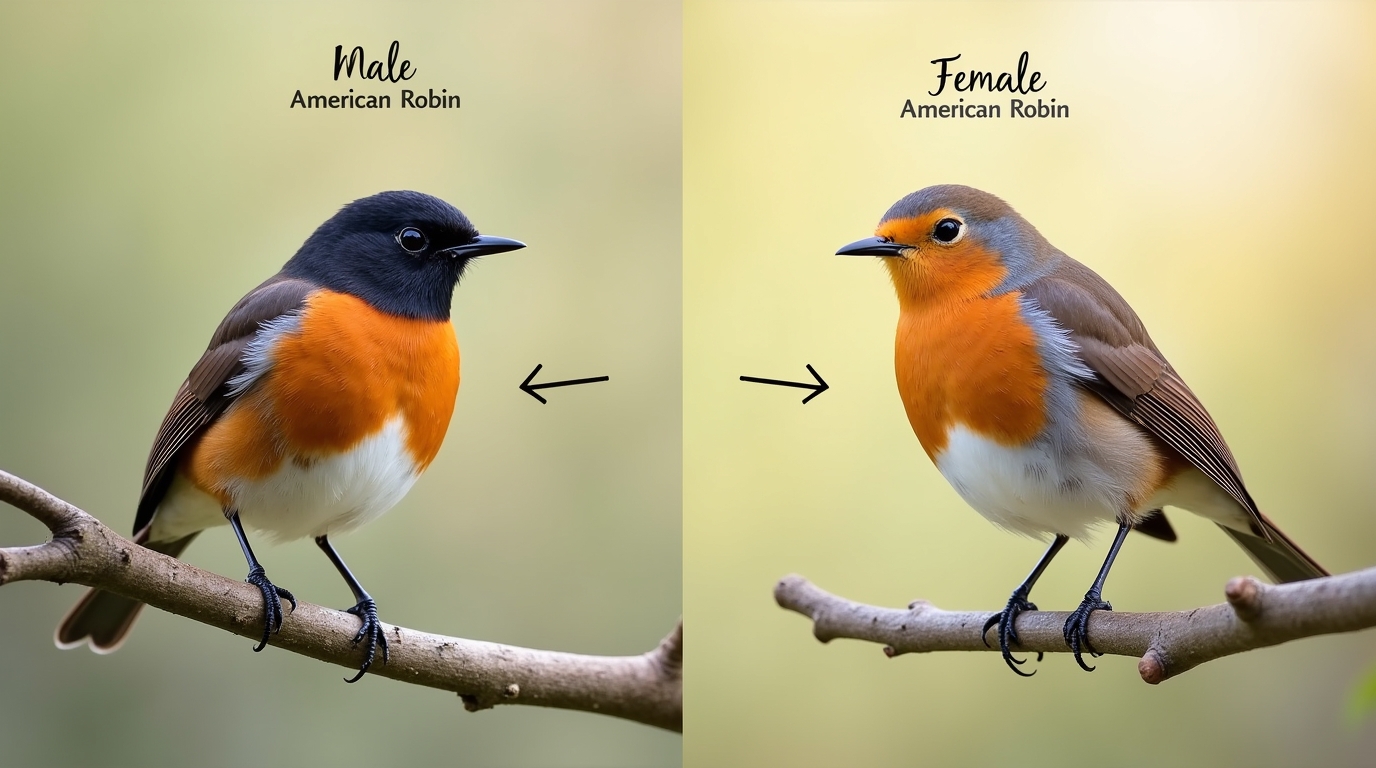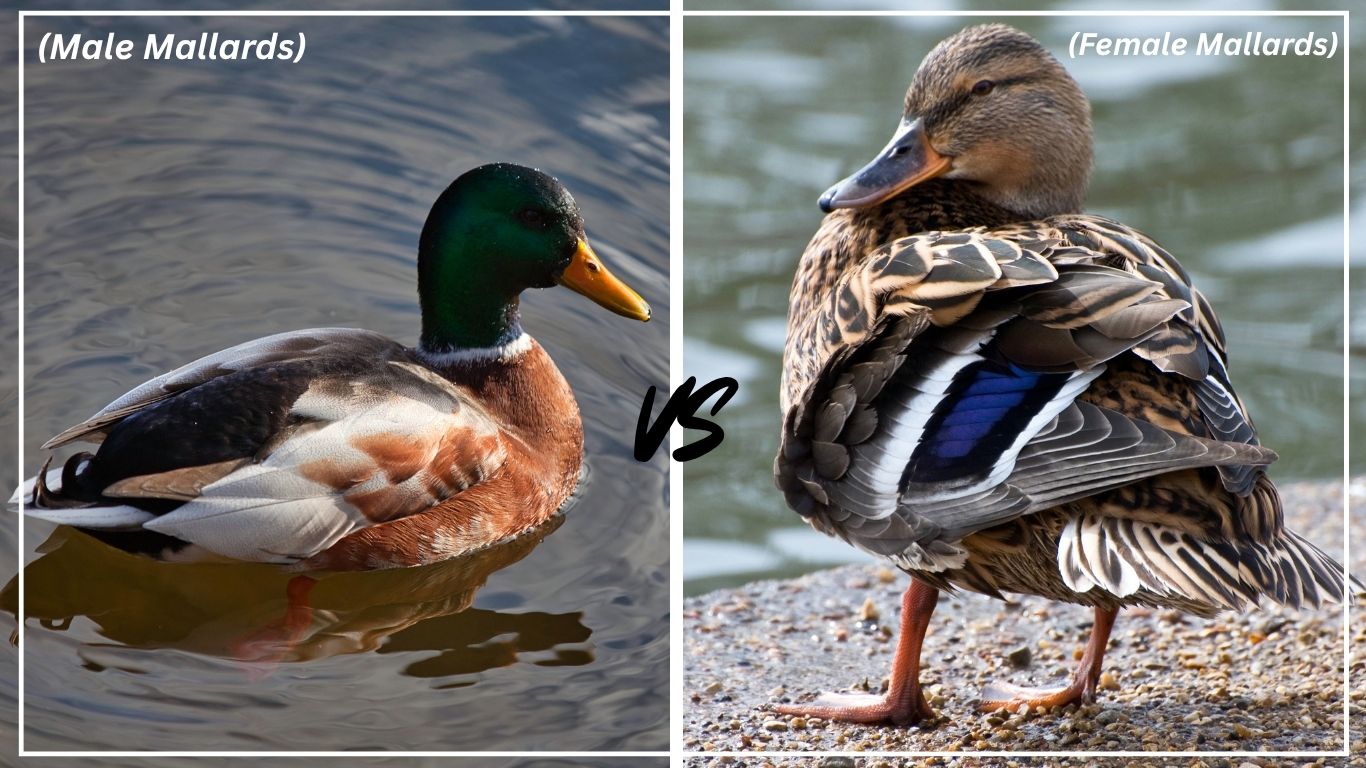Florida’s diverse landscape—ranging from pine forests and wetlands to coastal plains—offers a rich habitat for many owl species. In this guide, we explore 9 types of owls that call Florida home, from the tiny Eastern Screech Owl to the rare and regal Snowy Owl. Whether you’re a birdwatcher or just curious about local wildlife, learning about these mysterious birds adds a new layer to Florida’s natural beauty.
1. Burrowing Owl

The Burrowing Owl is one of Florida’s most unique owl species—not just for its appearance but also for its behavior. Unlike most owls, it’s often active during the day and prefers life on the ground rather than in trees.
Appearance and Identification
Burrowing Owls are small, about 9 inches tall, with long legs and bright yellow eyes. Their brown feathers are speckled with white, giving them a mottled look. They often stand upright and appear alert, even comical, with expressive head tilts.
Habitat and Range in Florida
These owls are commonly found in open, dry areas like pastures, golf courses, and sandy fields—especially in South Florida. They often dig their own burrows or take over ones abandoned by other animals like gophers or tortoises.
Behavior and Activity
Unlike most owls, Burrowing Owls are active both day and night. They’re known for their curious personalities and will often stand at the entrance of their burrow watching nearby humans or animals. During the breeding season, males are more active during daylight, hunting insects and small prey.
Adaptation and Survival
To survive in Florida’s hot climate, Burrowing Owls rely on the insulation of their underground homes, which stay cooler than the surface. Their diet mainly consists of insects, small rodents, and reptiles, making them excellent pest controllers in grassy environments. Despite their adaptability, they face threats from habitat loss and human development.
2. Barn Owl

The Barn Owl is a ghostly figure in the night skies of Florida, known for its heart-shaped face and silent flight. It plays a vital role in controlling rodent populations and is often found near farmlands and open fields.
Appearance and Identification
Barn Owls have a distinctive white, heart-shaped facial disc, pale underparts, and golden-buff upperparts with scattered spots. Their dark eyes and smooth, rounded wings give them an elegant yet haunting look in flight.
Habitat and Range in Florida
They are widely distributed across Florida, especially in agricultural areas, grasslands, and marshes. True to their name, Barn Owls often nest in barns, silos, and abandoned buildings, as well as in natural tree cavities.
Behavior and Activity
Nocturnal and rarely seen during the day, Barn Owls silently patrol fields at night, using their exceptional hearing to locate prey in total darkness. Their eerie screech, unlike the typical hoot of other owls, often startles first-time listeners.
Adaptation and Survival
With their ghost-like appearance and ability to hunt in complete silence, Barn Owls are highly efficient predators. Their main diet consists of small mammals like mice and rats. While they adapt well to rural settings, loss of old structures and nesting sites poses challenges to their population.
3. Great Horned Owl

The Great Horned Owl is one of Florida’s most powerful and widespread owls. Known for its piercing yellow eyes and tufts that resemble horns, this owl rules as a top predator in many habitats.
Appearance and Identification
Large and imposing, Great Horned Owls are about 18–25 inches tall. They have a mottled brown body, a white throat patch, and iconic feather tufts on their head. Their deep hooting call is among the most recognizable owl sounds in the wild.
Habitat and Range in Florida
This owl is found all across Florida—in forests, swamps, parks, and even suburban areas. They’re extremely adaptable and can nest in trees, cliffs, or even on man-made structures.
Behavior and Activity
Great Horned Owls are strictly nocturnal and begin their activity at dusk. They are stealthy hunters with a diverse diet, ranging from rabbits and birds to snakes and skunks. They are also known to prey on other raptors, including smaller owls.
Adaptation and Survival
Thanks to their size and strength, Great Horned Owls face few natural predators. Their thick talons and powerful grip allow them to capture large prey. They are highly territorial and often return to the same nesting areas year after year.
4. Barred Owl
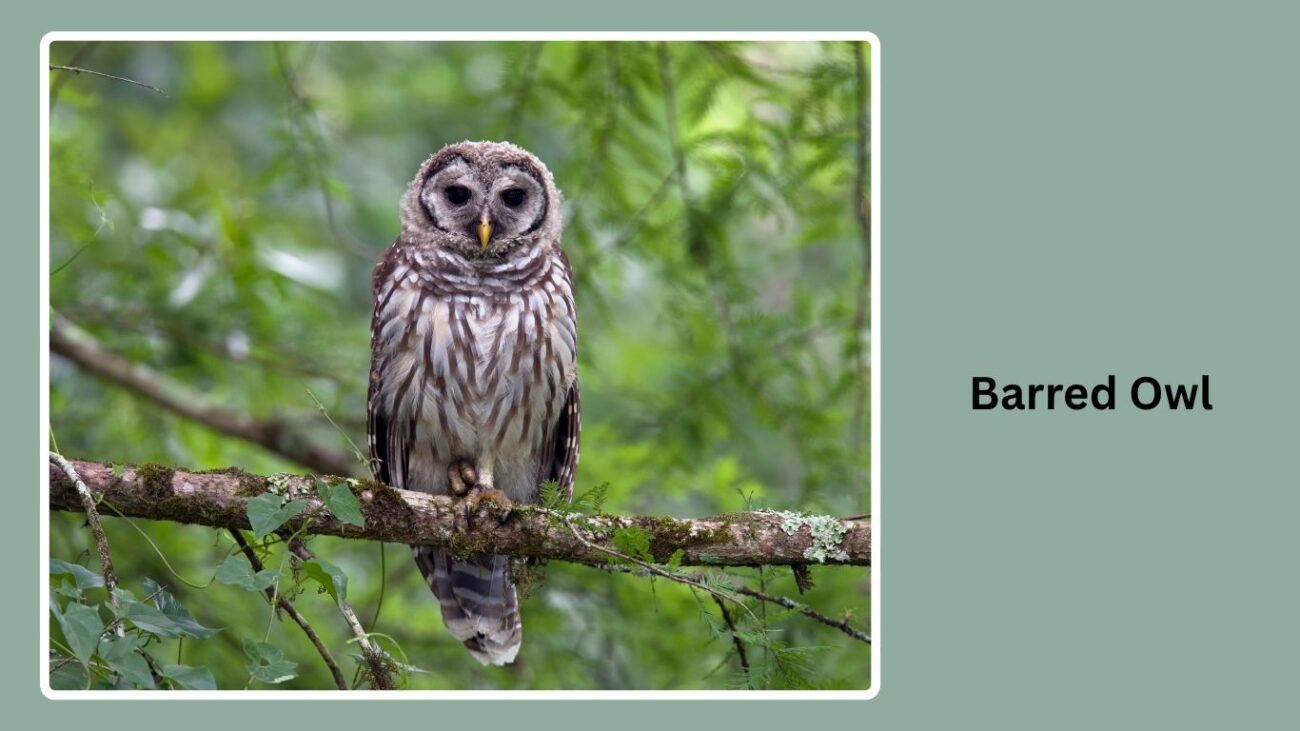
The Barred Owl is a common forest dweller in Florida, easily recognized by its soulful eyes and distinctive “Who cooks for you?” call echoing through the woods. It’s one of the most vocal and noticeable owls in the southeastern U.S.
Appearance and Identification
Barred Owls have rounded heads without ear tufts, deep dark brown eyes, and a brown-and-white striped pattern across their chest—hence the name “barred.” They’re medium to large in size, around 16–20 inches tall.
Habitat and Range in Florida
They thrive in dense, wet woodlands, especially swamps, river edges, and cypress forests throughout Florida. They prefer areas with thick tree cover and nearby water sources for better hunting opportunities.
Behavior and Activity
Mostly active at night, Barred Owls can also be heard calling in the daytime, especially during the breeding season. They perch silently and swoop down to catch prey, including small mammals, birds, and amphibians.
Adaptation and Survival
Their ability to live in both remote forests and suburban woodlands helps them stay abundant across the state. They often use old nests built by hawks or squirrels and may return to the same nesting site year after year.
5. Eastern Screech Owl
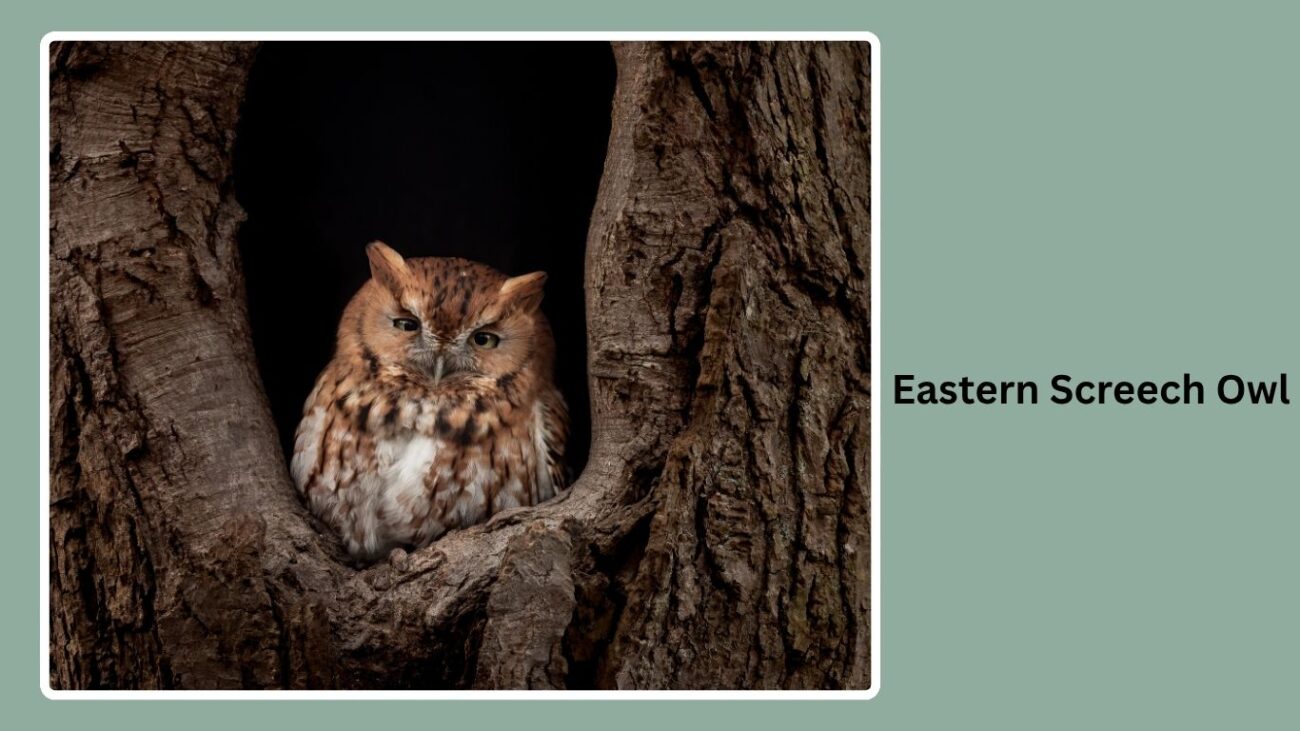
The Eastern Screech Owl is a master of camouflage, blending perfectly into tree bark with its mottled feathers. Despite its small size, it’s a fierce and adaptable predator found across Florida.
Appearance and Identification
These owls are compact, about 6–10 inches tall, and come in two color morphs: gray and reddish-brown. Their head has small, pointy ear tufts, and their yellow eyes stand out against their plumage.
Habitat and Range in Florida
Eastern Screech Owls are found in forests, suburban neighborhoods, parks, and even backyard tree cavities throughout Florida. They readily use nest boxes when available.
Behavior and Activity
Nocturnal and highly territorial, they emit a soft, trilling call rather than a screech—despite their name. They hunt from low perches and feed on insects, lizards, small birds, and rodents.
Adaptation and Survival
Their camouflage makes them almost invisible during the day, allowing them to rest safely in tree holes. Their flexible diet and nesting habits allow them to thrive even in developed areas, making them one of Florida’s most widespread owls.
6. Snowy Owl

The Snowy Owl is a rare but striking winter visitor in Florida, occasionally spotted during irruption years when food is scarce in its Arctic breeding grounds. Its bright white feathers and powerful presence make it unforgettable.
Appearance and Identification
Snowy Owls are large, about 20–27 inches tall, with thick white plumage that helps them blend into snowy landscapes. Males tend to be whiter, while females and juveniles often have dark spots or bars across their feathers.
Habitat and Range in Florida
Though not a regular resident, Snowy Owls occasionally show up in Florida during winter—usually in open areas like beaches, coastal dunes, airports, and large fields. These sightings are rare and cause excitement among birders.
Behavior and Activity
Unlike most owls, Snowy Owls are often active during the day, especially at dawn and dusk. When they visit Florida, they tend to rest on the ground or low perches while watching for prey.
Adaptation and Survival
Built for life in the tundra, Snowy Owls are well-insulated and powerful hunters. Their presence in Florida is usually short-term, and they mainly feed on small mammals and birds while visiting. These rare appearances are usually tied to fluctuations in lemming populations up north.
7. Short-eared Owl
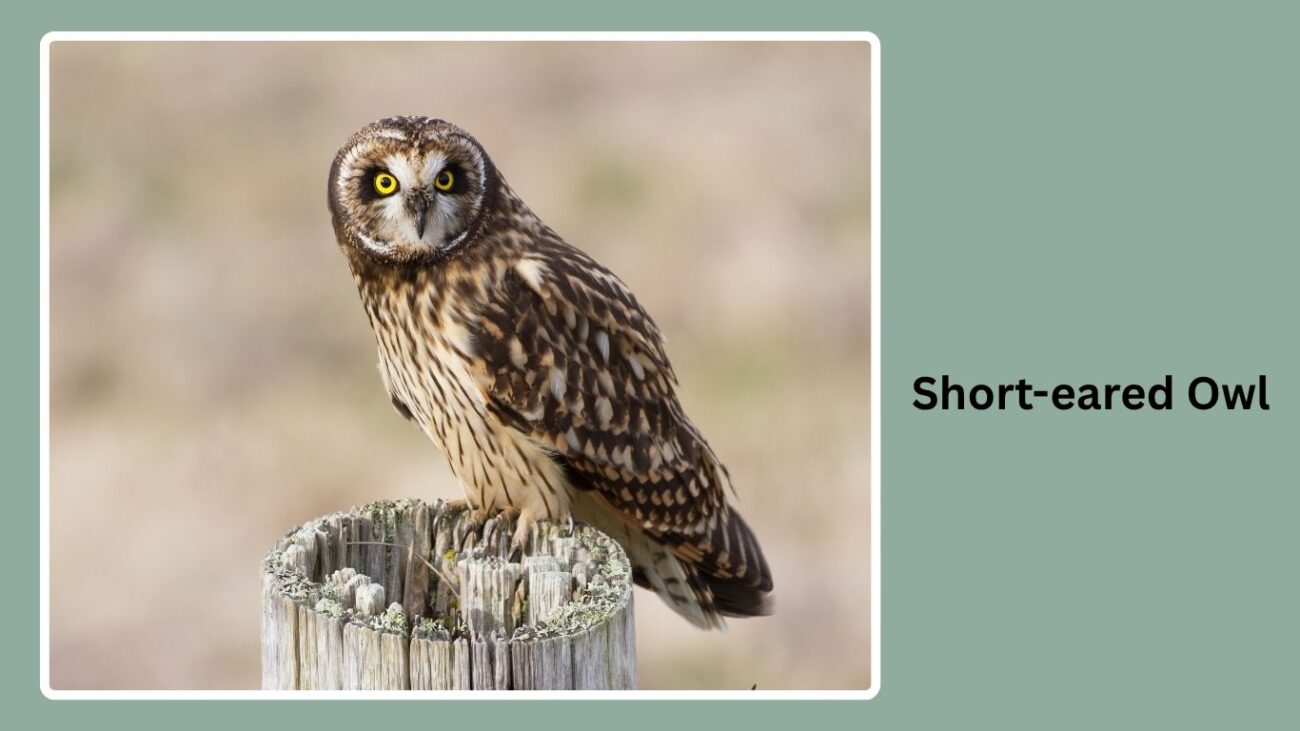
The Short-eared Owl is another winter visitor in Florida, known for its open-country habits and moth-like flight. Though not common year-round, they are spotted regularly in the state’s grasslands and marshes during the cooler months.
Appearance and Identification
As the name suggests, Short-eared Owls have barely visible ear tufts, giving their round heads a smooth appearance. They’re medium-sized, about 13–17 inches tall, with streaked brown plumage and striking yellow eyes.
Habitat and Range in Florida
They favor open habitats like prairies, grassy fields, airports, and marshlands in Florida, especially in the central and southern parts of the state. They are most often seen in the winter and during migration.
Behavior and Activity
Unlike most owls, Short-eared Owls are often crepuscular—active during dawn and dusk. They fly low over open land, flapping slowly as they hunt for small mammals like voles and mice.
Adaptation and Survival
Their low, erratic flight and ability to nest on the ground help them survive in flat, open landscapes. Though their population fluctuates with habitat conditions, they continue to be a thrilling sight for Florida birders each winter.
8. Northern Saw-whet Owl

The Northern Saw-whet Owl is one of the smallest and most elusive owl species found in Florida. Though rare in the state, it occasionally appears during winter migration, mostly in the northern parts.
Appearance and Identification
Tiny and round-headed, Northern Saw-whet Owls are only about 7–8 inches tall. They have big yellow eyes, a white facial disk, and reddish-brown feathers with fine white streaks. Their compact body and soft features make them look almost toy-like.
Habitat and Range in Florida
They are rarely seen in Florida, but when they do show up, it’s usually in dense forests or wooded swamps in the Panhandle region. They prefer coniferous or mixed woodlands when they visit.
Behavior and Activity
These owls are strictly nocturnal and are often very hard to spot. They emit a repetitive, high-pitched “toot” during breeding season and remain silent while wintering. Their diet consists mainly of small rodents and insects.
Adaptation and Survival
Despite their size, they’re efficient hunters, often storing extra food during good hunting nights. Their secretive nature and quiet habits help them avoid predators and survive harsh winter migrations.
9. Flammulated Owl
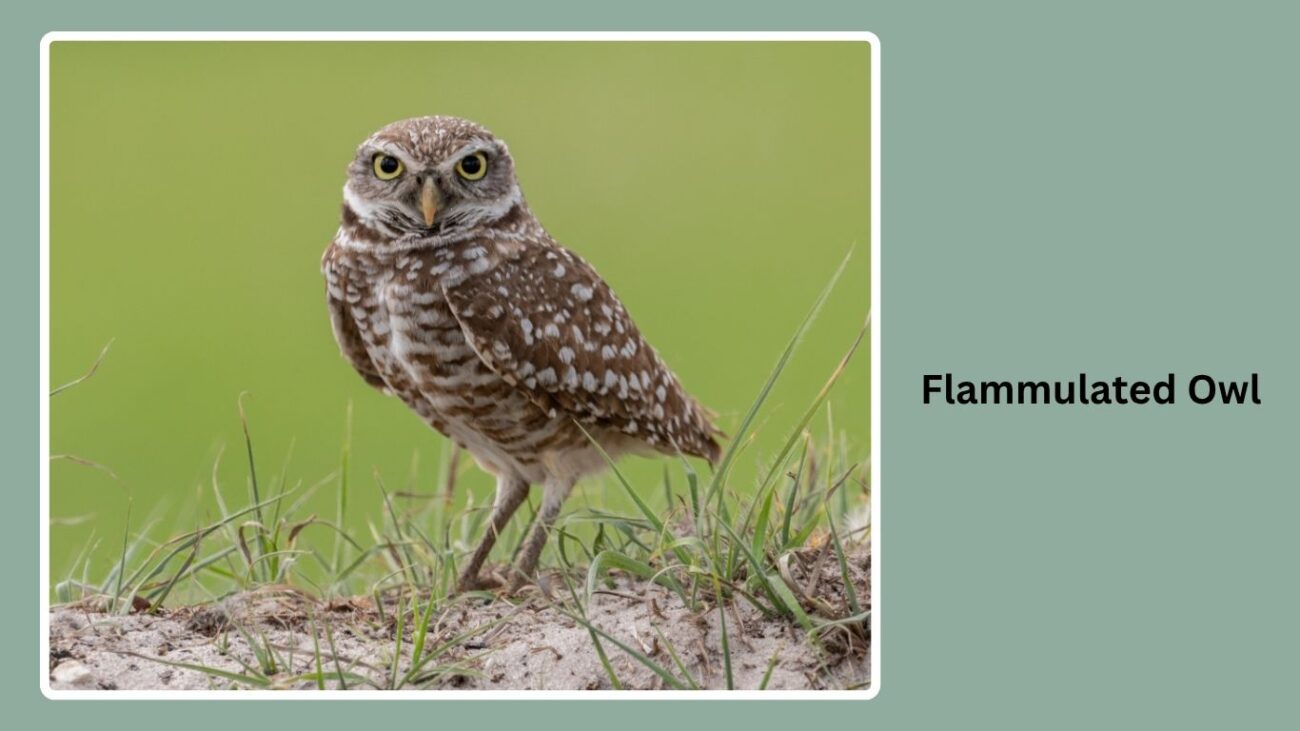
The Flammulated Owl is an extremely rare visitor in Florida and one of the most mysterious owls in North America. Its name comes from the flame-like markings on its face.
Appearance and Identification
Flammulated Owls are tiny—around 6 inches tall—with grayish-brown plumage and rusty streaks. They have dark eyes (unusual for small owls), short ear tufts, and a soft, almost ventriloquial hoot that makes them hard to locate.
Habitat and Range in Florida
They are not residents of Florida but may appear as accidental migrants, typically from the western U.S. They favor pine and mixed-conifer forests but sightings in Florida are exceptionally rare and usually tied to unusual migration patterns.
Behavior and Activity
These owls are nocturnal and spend most of their time hidden in tree canopies. They are difficult to detect due to their quiet call and camouflaged appearance. Their diet mainly consists of moths and other large insects.
Adaptation and Survival
Flammulated Owls are migratory, spending summers in higher elevations out west and wintering in Central America. Their rare presence in Florida highlights the surprising reach of owl migration routes, even for such small, secretive species.
FAQs
1. What is the most common owl species in Florida?
The Eastern Screech Owl and the Barred Owl are among the most common and widespread species in Florida. They adapt well to both wild and suburban environments, making them frequent backyard visitors.
2. Can owls be seen during the day in Florida?
While most owls are nocturnal, some like the Burrowing Owl and Short-eared Owl may be active during the day, especially around dawn or dusk. Burrowing Owls are particularly known for their daytime activity.
3. Are Snowy Owls native to Florida?
No, Snowy Owls are not native to Florida. However, they occasionally appear during winter migration years known as irruptions. These rare visits are usually linked to food shortages in their Arctic habitat.
4. Do Florida owls live in urban areas?
Yes, several owl species in Florida, including the Eastern Screech Owl, Barn Owl, and Great Horned Owl, are known to nest and hunt in suburban and even urban areas, especially where trees or green spaces are available.
5. Are owls protected in Florida?
Yes, all owls in Florida are protected under the Migratory Bird Treaty Act, which makes it illegal to harm, capture, or possess them without proper permits. Their nests and eggs are also protected by law.

